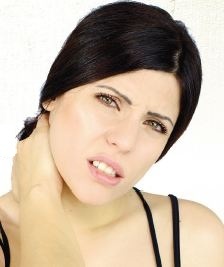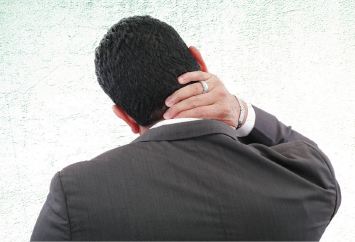Although the symptoms of torticollis are visibly identical in children and adults, the disease presents in different ways by age and causes.
Symptoms in Children
A visual diagnosis may be all that is required with infants and young children. The child’s neck begins to twist and the head turns. The chin will point to one shoulder while the head is tilted toward the other shoulder.
If the condition is left untreated, the face and skull develop at an uneven rate until the twisted neck is permanent and the motion of the head and neck is severely constrained.
Typically, the head tilts to the right and the chin points left. This positioning indicates the affected muscle is on the right side. The child will not be able to move its head well and there may be a lump present on the muscle itself.
Symptoms in Adults
Spasmodic torticollis in adults comes on more gradually, and may follow a head or neck injury, an infection, or a course of medication. The condition is most commonly seen in adults between the ages of 25-55 years.
About 5% of the people diagnosed with torticollis report at least one relative who suffered from a twisted neck, with more than 50% indicating a history of head or hand tremors in the extended family.
At first the symptoms are subtle, with stiffness or fatigue present. For instance, you may be driving and have difficulty holding your head straight for long periods of time. It’s not uncommon for someone else to notice the tilt of the head first and to ask if you injured your neck.
Over 2-5 years the torticollis will reach its peak, tending not to worsen after that time. The associated pain and discomfort is typically “focal” or located in one place, often the back of the shoulders or the side of the neck.
There are three distinct types of spasmodic torticollis:
– tonic, which turns the head to the side
– clonic, which presents with shaking of the head
– mixed, where both turning and shaking are present
The directionality of the twisting is classified as:
– rotational, with the head turned to one side or the other
– laterocollis, with the head pulled toward the shoulder
– retrocollis, with the head pulled back
– anterocollis, with the head pulled forward
Most cases do not neatly fall into these categories, however, with multiple combinations possible.






 I love to write medical education books. My books are written for everyone in an easy to read and understandable style.
I love to write medical education books. My books are written for everyone in an easy to read and understandable style.